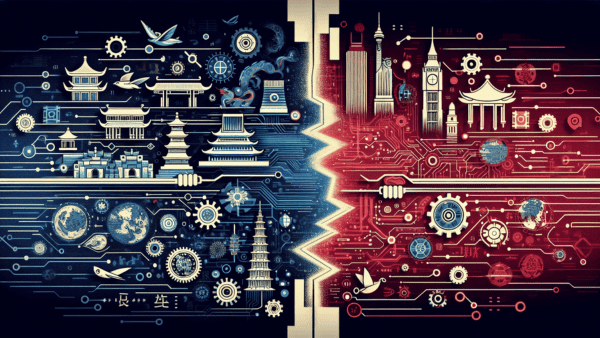China Rapidly Catching Up In Ai

As we dive deeper into the 21st century, artificial intelligence (AI) takes center stage in propelling global technological advancement.
In this remarkable journey, one player has emerged with a steady stride and surprising agility — China.
This seismic shift in the technological arena is highlighted in a recent report by the Information Technology and Innovation Foundation (ITIF), revealing China’s significant strides in AI and the persistent gap in its semiconductor capabilities.
In the exciting field of AI, China is rapidly closing the gap with the Western technology behemoth, the United States. The ITIF report indicates that from 2017 to 2022, China led the globe in AI research publications. With more than 234,000 published papers, China’s prolific output underlines a strong AI research orientation, propelling it on an upward trajectory. Reflecting this trend in the patent arena, China recorded six times as many generative AI patents as the US from 2014 to 2023.
Supporting these impressive successes is China’s vibrant academic community and a thriving pool of talent. The nation’s strategic investment in education and research has fostered a fertile ground for AI development, allowing it to press ahead towards becoming a serious challenger to Western dominance in the AI arena.
However, China’s remarkable performance in AI contrasts with its persistent struggles in the area of semiconductor production. While China excels in several technological domains, including nuclear power, electric vehicles, batteries, robotics, displays, and quantum computing, it desperately lags in the field of semiconductor technology. China’s struggles mirror the global semiconductor supply chain’s complexities and dynamics, where geopolitical tensions and export controls play crucial roles.
Blocking China’s access to sophisticated machinery for chip-making, the US and its allies have levied export controls on advanced semiconductor production equipment. Adding to these constraints, China’s chip production pursuit took another hit with new restrictions imposed by the Dutch government on ASML’s deep ultraviolet (DUV) chip-making tools.
Despite these obstacles, China is relentless in pursuing technological prowess, as the ITIF report paints a picture of a nation racing ahead in numerous technological areas. While semiconductor technology remains an area of concern, China’s unwavering commitment to research, its ability to harness talent, and the government’s robust backing with funds and policy support position it as a formidable contender in the global technology race.
The awakening dragon of the East brings essential lessons and warnings. The report’s closing notes recommend that the US focus on strengthening its competitiveness through increased research funding and the establishment of industrial research institutes. It highlights the urgent need for the US to emulate a “national power capitalism” model to maintain and expand its technological edge in an increasingly competitive global landscape.
To sum up, China’s rapid ascent in AI and other technological domains evokes a sense of awe - and a dash of fear - among its global peers. Yet, it also underscores how crucial it is for nations like the US to perpetually innovate and bolster their strengths to maintain their technological edge. China’s technological journey serves as a reminder that the race is ongoing and that pace and agility, coupled with a clear vision, can challenge traditional hegemonies.
